The two latest Sigma printers from BCN3D, the Sigma R19 and the Sigmax R19, are certainly beastly machines with a lot of features packed into their sleek stamped metal frames. Here, we’ll focus on the latter, a professional, large-format dual extrusion 3D printer.
But it’s not just any professional, large-format dual extrusion 3D printer. With the 2019 generation comes a focus on productivity and reliability. For starters, the build volume exceeds even that of the Ultimaker S5. Then, add to that the Sigmax’s independent dual extruder (IDEX) system, complete with Mirror and Duplication modes.
This article aims to give an overview of all that the BCN3D Sigmax R19 claims to be, and then put it through its paces with our 10-hour benchmarking process.
Feature Check
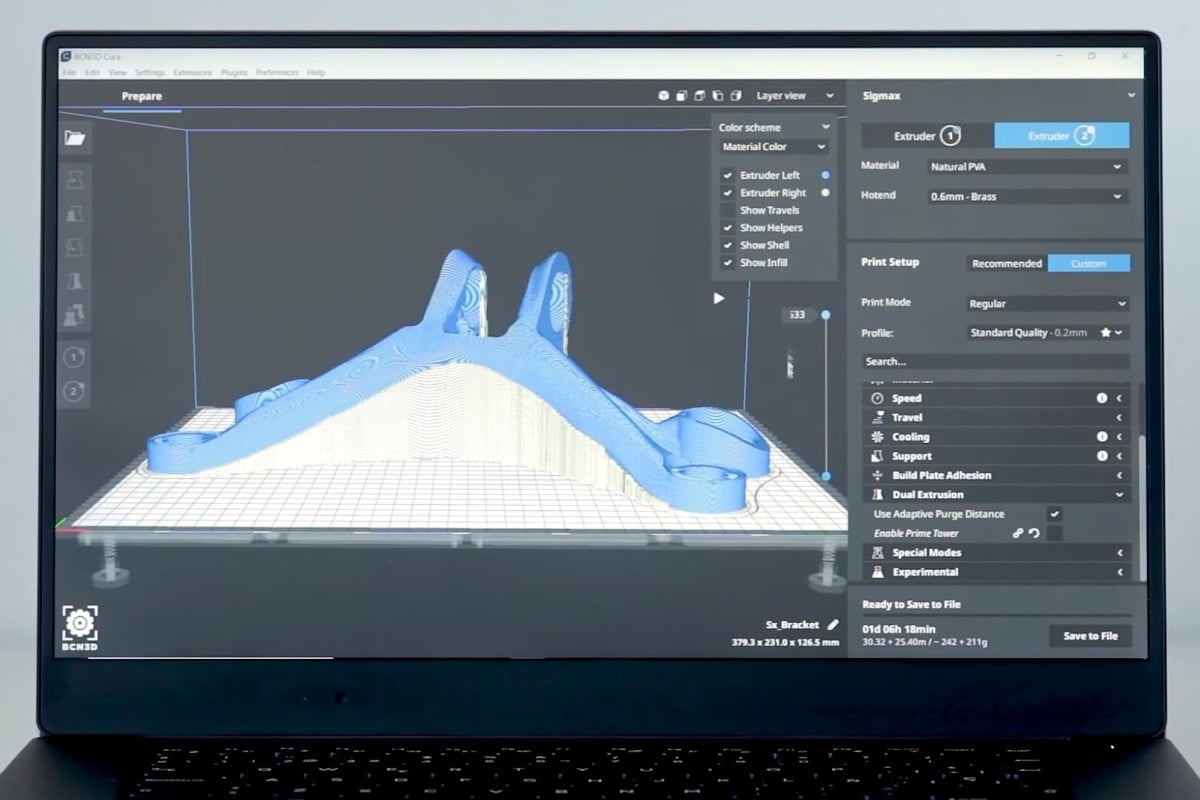
In contrast to its desktop little brother, the Sigma, BCN3D calls the Sigmax R19 a professional printer, which is said to be ideal for industrial-grade parts and production thanks to it’s many features. Let’s have a look!
Huge Build Area
The Sigmax is BCN3D’s biggest printer, with a build area that reaches to a voluminous 420 x 297 x 210 millimeters. This gives it something of a size advantage over many similarly priced machines, allowing for larger than average prints that make use of its multi-material capabilities, plus larger batches.
IDEX Motion System
The Sigmax features BCN3D’s Independent Dual Extrusion (IDEX) system, a mechanical arrangement that uses two print heads that are paired in the Y-axis, but can move independently in the X-axis.
Supporting modes such as Duplicate and Mirror printing – both of which have the print heads printing simultaneously – this system, paired with the large build plate, makes the Sigmax the ideal workhorse for large batch prints. Alternatively, for cleanly combining different materials into a print, the IDEX system removes the issues of oozing and stringing from the inactive hot end. Rather than drag both nozzles around for the entire print, the inactive tool head is simply parked on the side past a nozzle-cleaning silicone blade until it becomes needed.
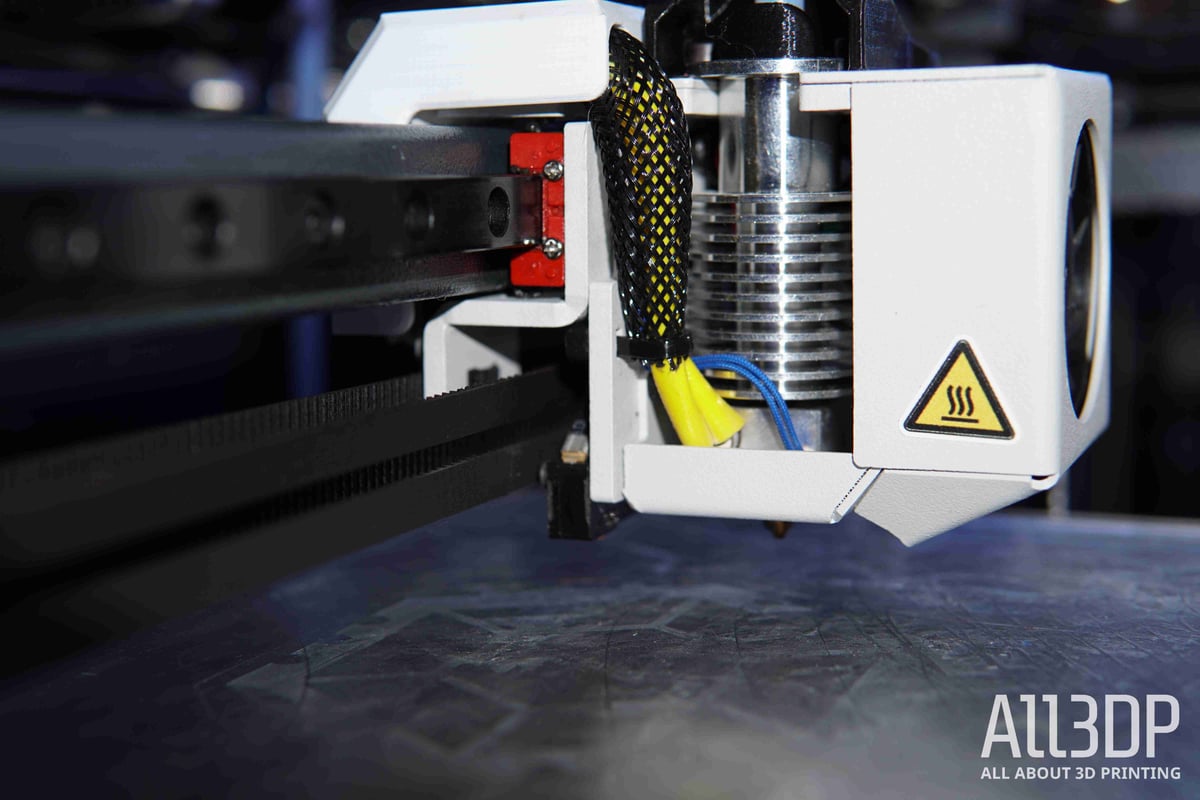
Bondtech Extruders & E3D Optimized Hot Ends
That’s only the beginning when it comes to the Sigmax’s powerful print heads. Hardened steel drive gears and Bondtech extruders give this printer exceptional gripping power, and one would think that no filament can escape its molten fate once loaded in. A family of all-metal hot ends custom-tuned for the Sigmax by British OEM E3D provide excellent heating and smooth, reliable extrusion in a neatly interchangeable package.
The Sigmax ships with 0.4 mm nozzle-equipped hot ends as standard, but you can also purchase an additional pack of hot ends with different nozzle sizes for high-detail and rapid draft printing, plus hardened for tough engineering-grade material printing.
Additional Notes
Both extruders of the BCN3D Sigmax feature a filament sensor for automatic pausing of long-term prints.
And although the Sigmax R19 is compatible with all the most popular slicer platforms, BCN3D Cura 2.1.0 – the latest version of the company’s in-house Cura adaptation – released with the printer, offering a slicing experience optimized by BCN3D for this particular machine.

Benchmarking

To get a good first impression for this BCN3D Sigmax R19 review, we took the machine for a test ride by printing two torture tests on a new, freshly unboxed and unaltered machine, using PLA filament and averaged slicer settings for the ranges specified for the material.
Calibration was a breeze, with the well-tuned touch screen UI on the printer and the provided instructions.
Benchmarking Object 1: Benchy
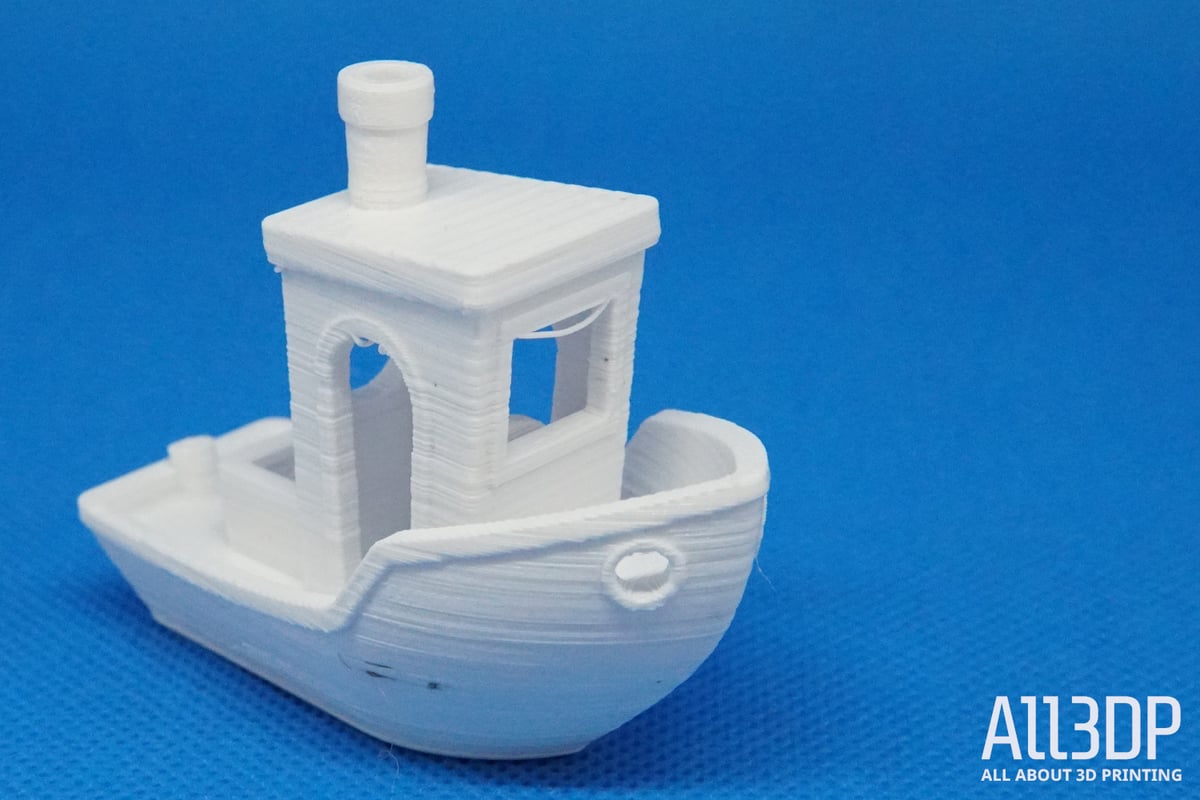
We used amazon white eSun PLA+ filament/amazonlink]. For preparing the needed G-code, we used the BCN3D Cura 2.1.15 that comes with the BCN3D Sigmax R19.
It took us one attempt to print a Benchy.
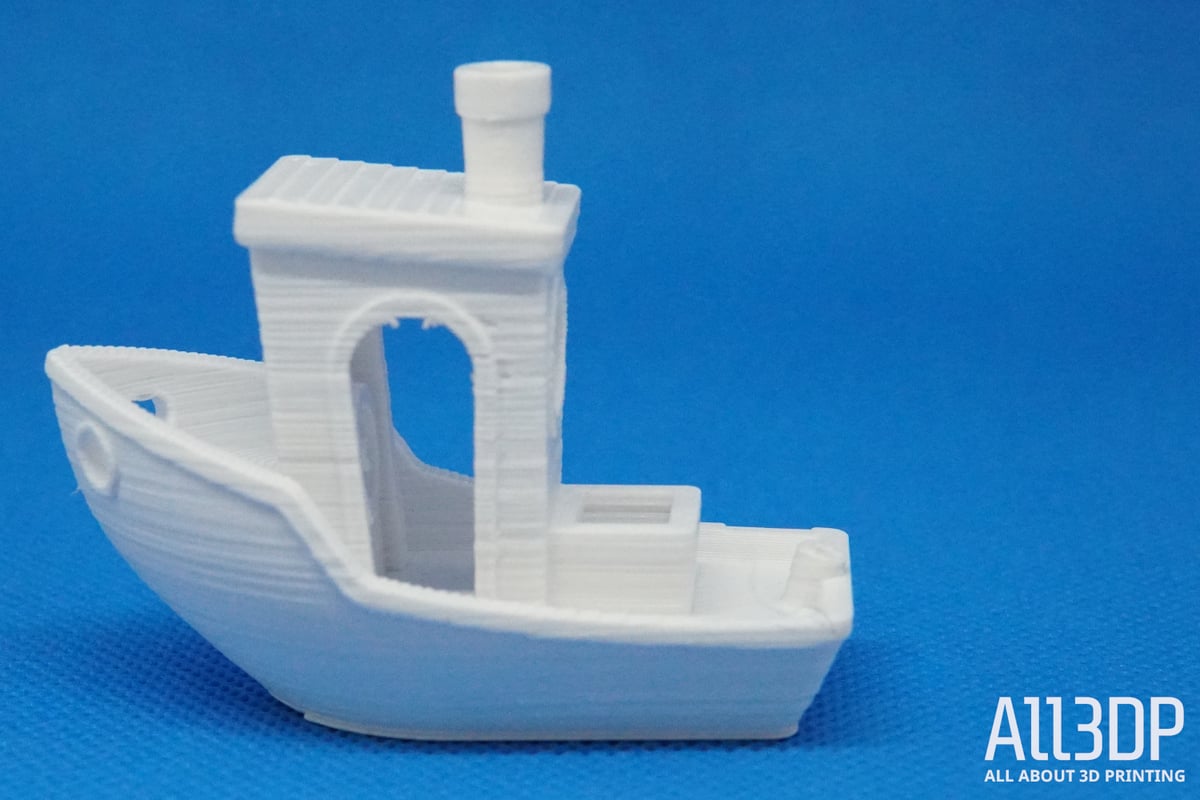
We measured the physical dimensions of the print. The BCN3D Sigmax R19 achieved a perfect 15 out of 15 points. The visual inspection was decent, but not what we would have expected for a printer of this price.
- Surfaces: The main problem was layering, as you can see above there is a significant amount of variation between each layer and the next, resulting in a rather rough finish.
- Details: Small details seemed to turn out well, with good definition and sharp edges, despite the Z-banding.
- Overall consistency: The print had minor inconsistencies, especially associated with the surface quality and Z-alignment. We found zits, layering, and problematic bridges.
Benchmarking Object 2: Kickstarter Autodesk Test
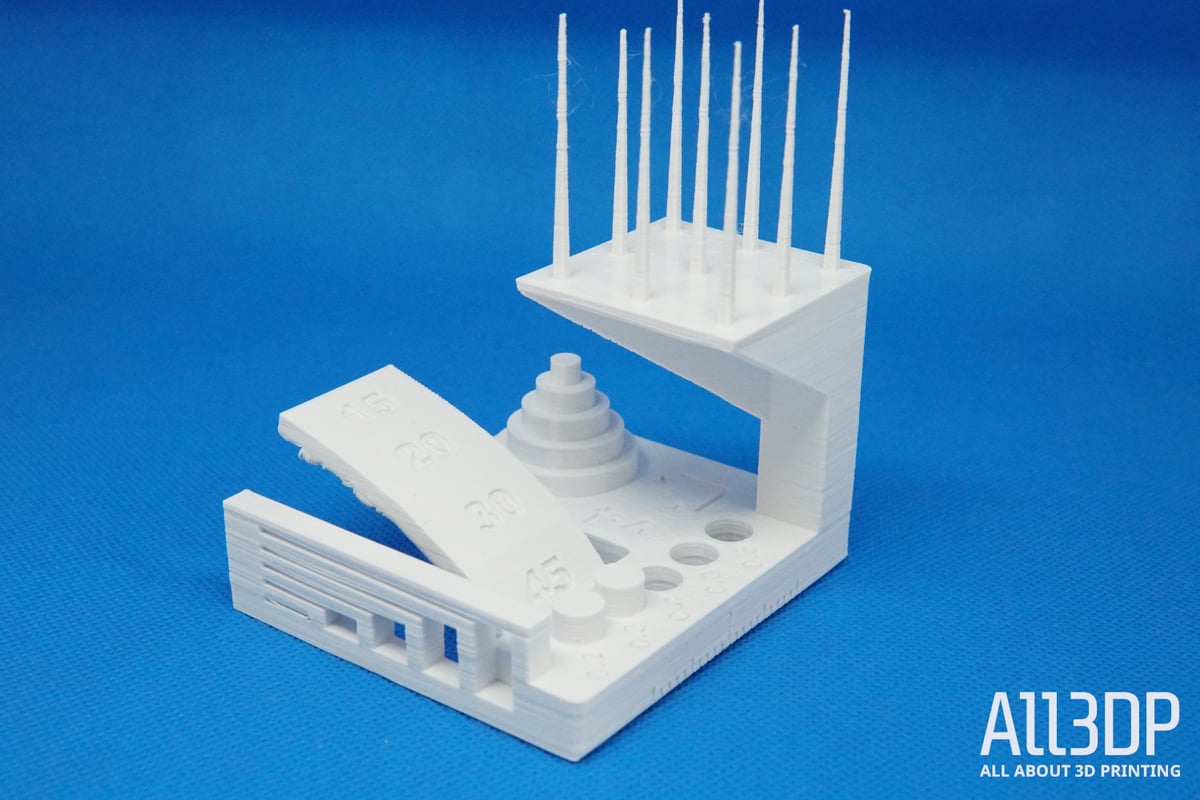
The Autodesk Kickstarter test model looks at an FDM printer’s precision. white eSun PLA+ filament and the same temperature settings (215 / 60).
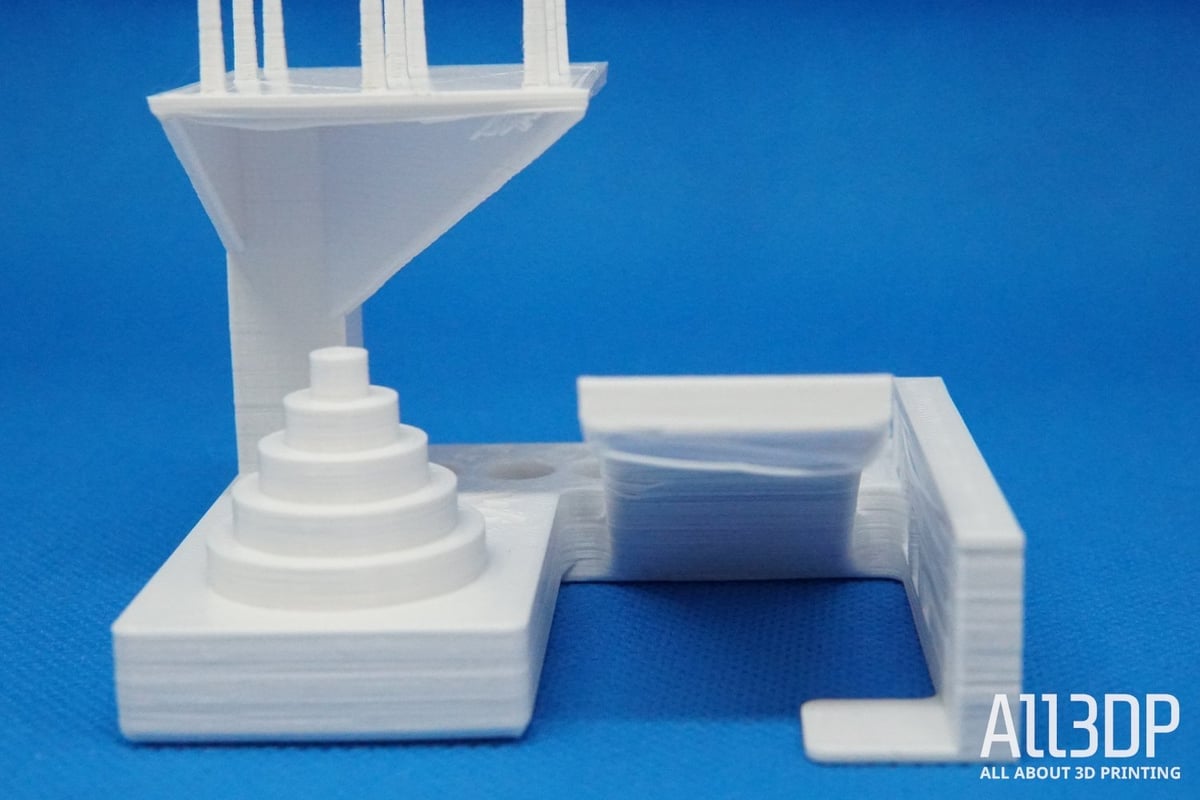
Overall, the BCN3D Sigmax R19 scored 23 out of 30 points. A decent score, we found some issues both while measuring and with the visual inspection.
- Surfaces: The main problem was bridging, which could be corrected by tuning retraction and extrusion settings.
- Details: Fine negatives posed a problem, not all of the pins were able to be removed from the print.
- Overall consistency: The print had minor inconsistencies, again some Z-banding, but not as bad as in the Benchy.

Benchmarking Verdict
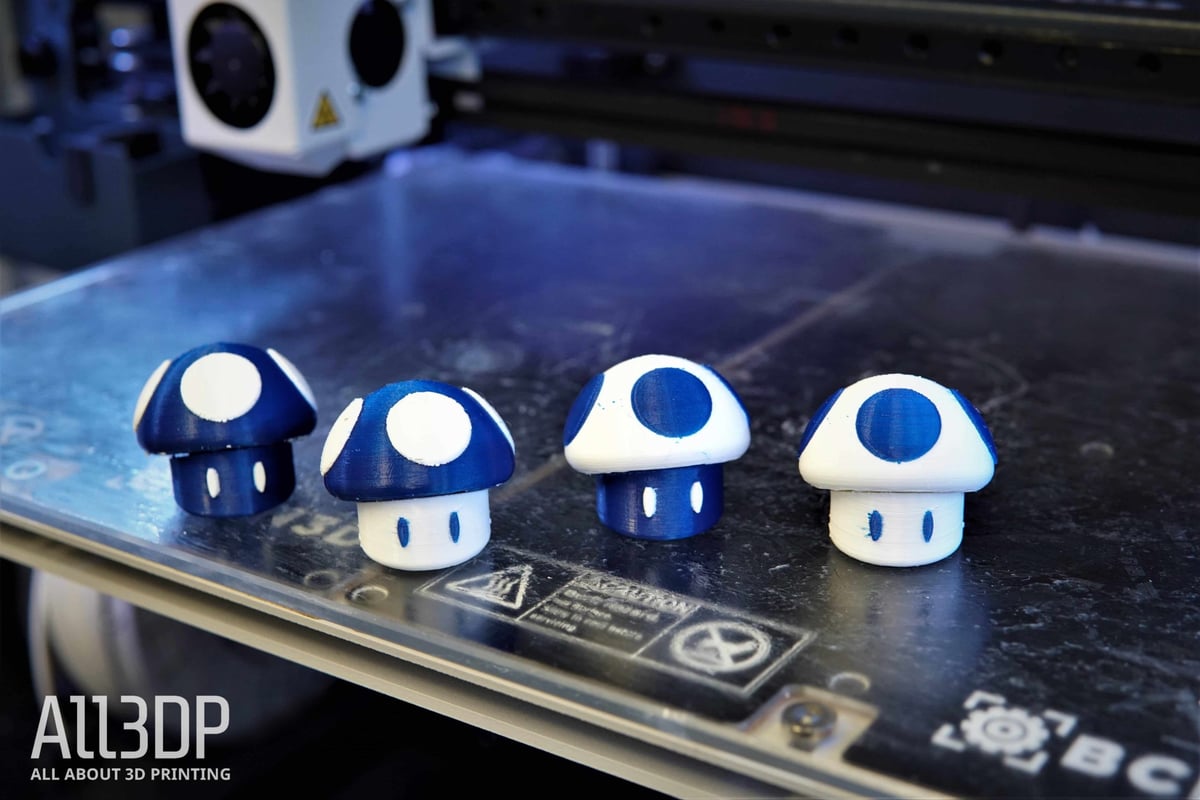
Our benchmarking prints put the BCN3D Sigmax R19 roughly on the same level as the Ultimaker S5 and the BCN3D Sigma R19, the smaller version of the Sigmax.
Overall, the printing process itself was easy. The special print modes like mirror, duplication and dual extrusion work as advertised. After approx. 10-hours printing with the BCN3D Sigmax R19, we were impressed.
Upon further fiddling with the machine, we were able to attribute a few of the extrusion issues to the nozzles, which for some reason need to be frequently cleaned. After following the intuitive interface to perform atomic pulls, the Sigmax was off like a bullet, printing away at a reliable rate. This is a procedure we find ourselves needing to do after every few print jobs, making us wonder if the Sigmax would benefit from a filament filter and oiler, something that would clean the filament and season the all-metal hot ends to avoid further jamming (while debated, it is still recommended for PLA in all-metal systems).
Across numerous months of printing with the machine for various projects, we have to say the Sigmax is among our favorite machines, especially with its huge print area and advanced IDEX system. Some things we have created are dual-color mushrooms (see above), Star Wars figures, and colored Pokemon, as well as modular print display shelves, decorative wall panels, and even Master Chief’s helmet from Halo (assembly still in progress).
To wrap up, the Sigmax is a reliable beast, and if you keep it maintained, it offers top-notch quality, ease of use, and consistency.

Review the Specs
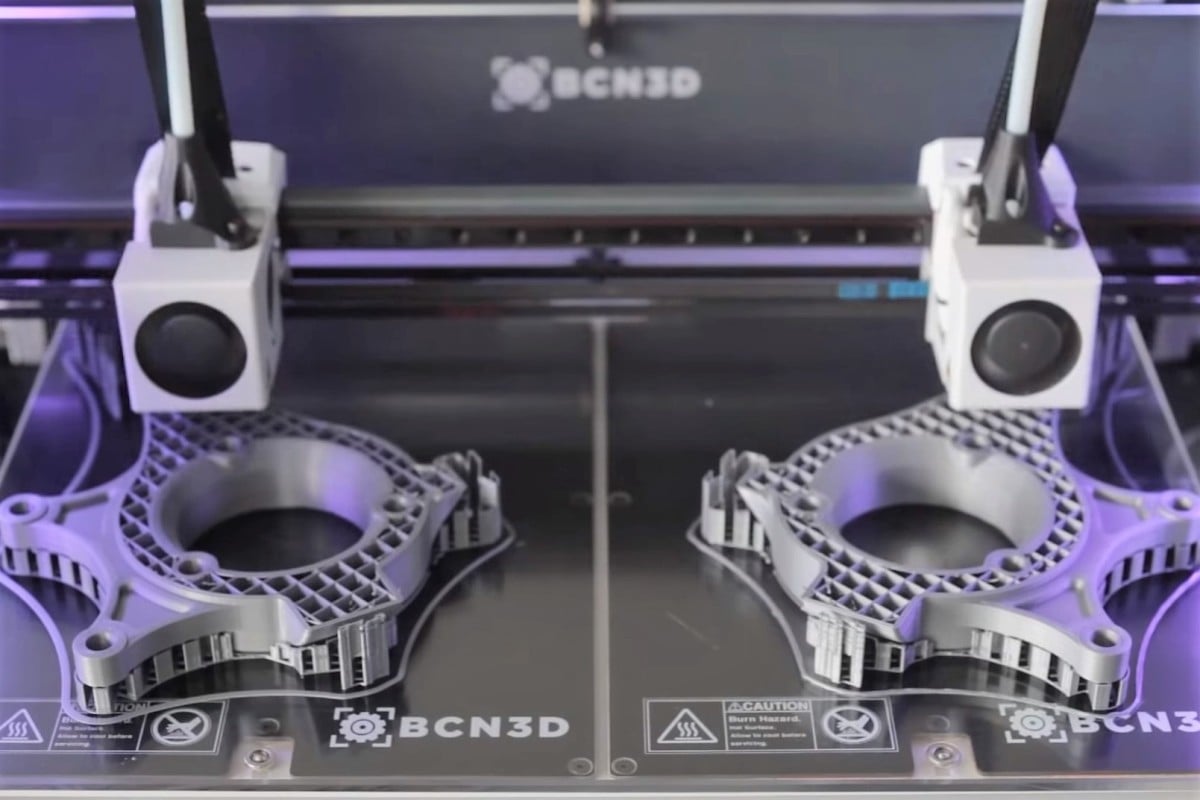
General Specifications:
- Technology: FFF
- Year: 2018
- Assembly: Pre-assembled
- Mechanical arrangement: Cartesian XY-Head (IDEX)
- Manufacturer: BCN3D
3D Printing Properties:
- Build volume: 420 x 297 x 210 mm
- Feeder system: Bowden
- Print head: 2x Single nozzle
- Nozzle size: 0.4 mm (interchangeable)
- Max. hot temperature: 290 °C
- Max. heated bed temperature: 100 °C
- Print bed material: Glass
- Frame: Steel, Aluminum
- Bed leveling: Manual
- Connectivity: USB, TF-Card
- Print recovery: No
- Filament sensor: Yes
- Camera: No
Materials:
- Filament diameter: 2.85 mm
- Third-party filament: Yes
- Filament materials: PLA, ABS, TPU, Flexible, Wood, PVA, HIPS
Software:
- Recommended slicer: BCN3D Cura
- Operating system: Windows, Mac, Linux
- File types: STL, OBJ, AMF
Dimensions and Weight:
- Frame dimensions: 675 x 440 x 680 mm (including cables)
- Weight: 20 kg

Where to Buy
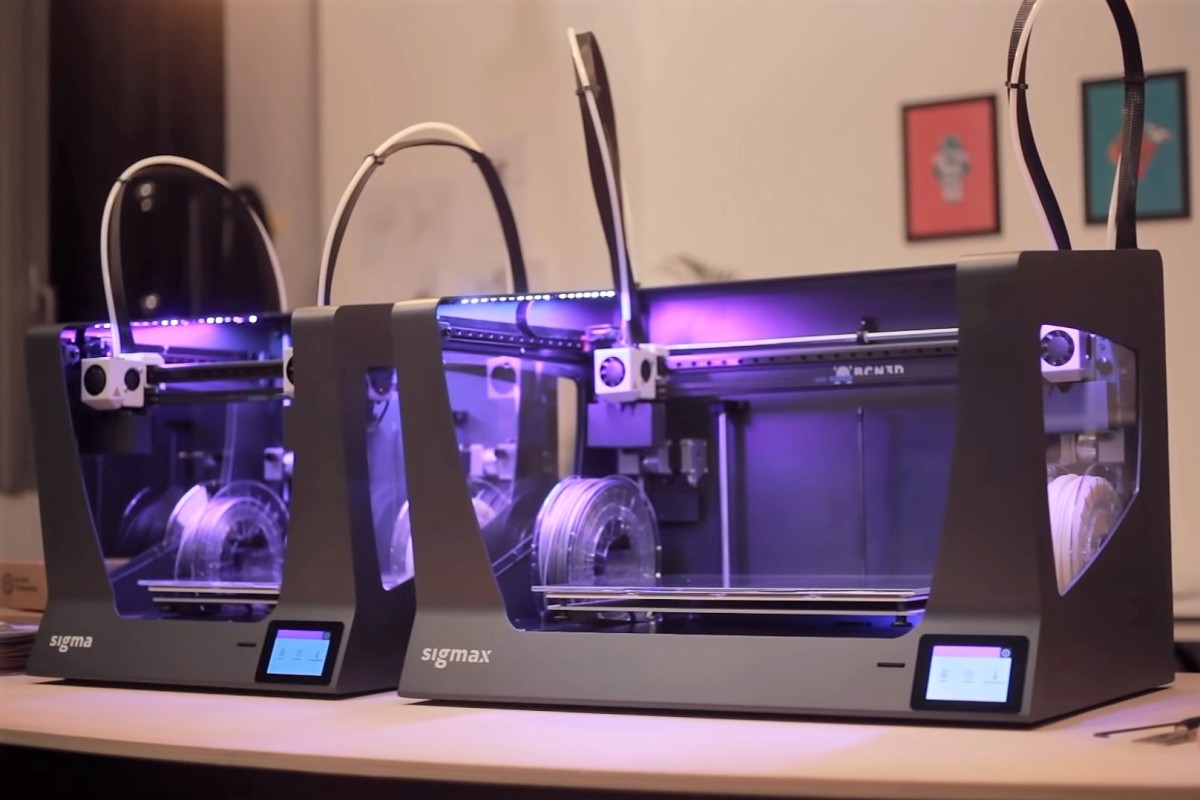
Despite having a larger print volume than the $6000 Ultimaker S5, the Sigmax R19 actually comes in nearly $2.5k cheaper, sitting right around $3,700. That said, it’s still a professional dual extrusion 3D printer, with a price tag to match.
You can buy the Sigmax R19 from the shops to the right / bottom (mobile).
Already have an older Sigmax? You’re in luck. For a much-reduced price, you’ll be able to order the Upgrade Kit for the Sigmax R19.

Benchmarking Results
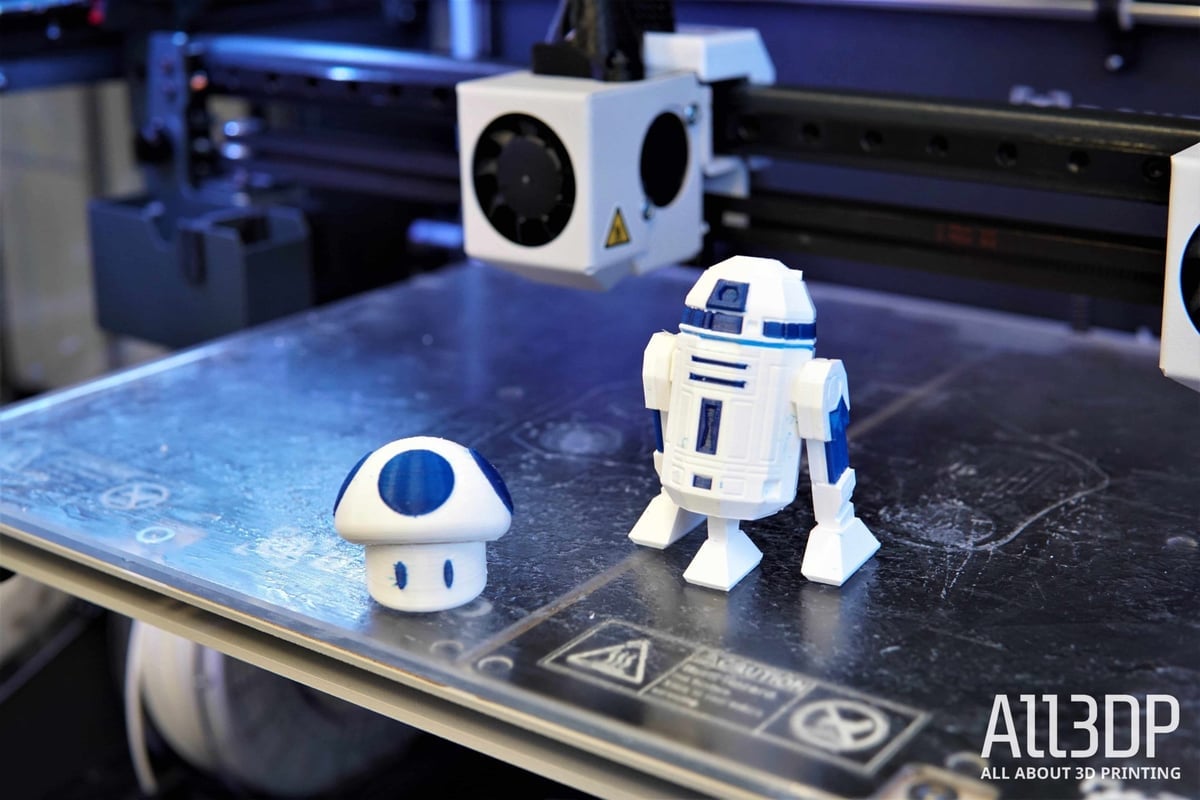
Here you find the detailed results for the Sigmax R19 test prints. For our benchmarking procedure please click here.
Benchy
- Overall length (60 mm ±1 % tolerance): 60.7 mm, 1 point given
- Overall width (31 mm ±1 % tolerance): 31.14 mm, 1 point given
- Bridge Roof length (23 mm ±1 % tolerance): 23.05 mm, 1 point given
- Chimney roundness inner diameter (3 mm ±10 %): 2.95 mm, 1 point given
- Chimney roundness outer diameter (7 mm ± 5 % tolerance): 6.93 mm, 1 point given
- Vertical overall-height (48 mm ±1 % tolerance): 47.94 mm, 1 point given
- Box depth (9 mm ± 5 % tolerance): 9.07 mm, 1 point given
- Box inner length (7 mm ± 5 % tolerance): 6.72 mm, 1 point given
- Box outer length (10.81 ± 5 % tolerance): 10.67 mm, 1 point given
- Box outer width (12 mm ± 5 % tolerance): 11.86 mm, 1 point given
- Box inner width: (8 mm ± 5 % tolerance): 7.95 mm, 1 point given
- Hawsepipe inner diameter left (4 mm ±10 % tolerance): 3.72 mm, 1 point given
- Hawsepipe inner diameter right (4 mm ±10 % tolerance): 3.62 mm, 1 point given
- Bridge front window width (10.5 mm ±5 % tolerance): 10.15 mm, 1 point given
- Rear window inner diameter (9 mm ±5 % tolerance): 8.95 mm, 1 point given
Kickstarter Autodesk Test
- Dimensional Accuracy: 5 of 5 points (25.05 / 20.09 /15.08 / 10.16 / 5.13)
- Fine Flow Control: 5 of 5 points (all spires were printed correctly)
- Fine Negative Features: 3 of 5 points (3 pins were removable)
- Overhangs: 2 of 5 points(dropped loops began at the 30-degree overhang)
- Bridging: 3 of 5 points (2 bridge contacted the surfaces beneath them)
- XY Resonance: 2.5 of 2.5 points (no ringing detectable)
- Z-axis alignment: 2.5 of 2.5 points (layer registration effect not visible)
Overall, the Sigmax R19 scored 38 out of 45 points.

How We Benchmark
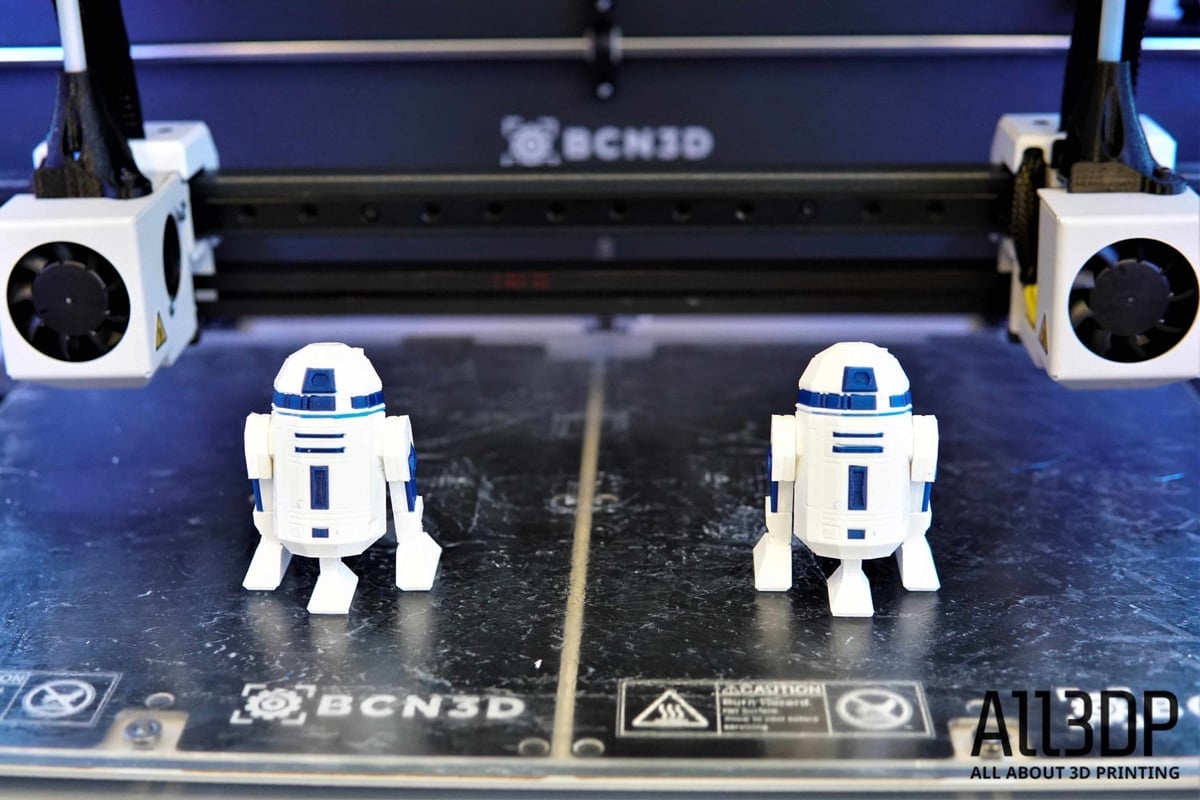
For the benchmarking element of our review, we use the following guidelines:
Unbox the printer: We unbox the printer and assemble it according to the manufacturer’s instructions. Deficiencies and errors are noted and built around according to the consensus online for the printer.
Filament: We use amazonlink url=”https://www.amazon.com/eSUN-1-75mm-Printer-Filament-2-2lbs/dp/B01EKEMFQS/” ()white eSun PLA+ filament/amazonlink (). Temperature settings are 215 °C for the nozzle and 60 °C for the bed.
Printing: We print two test models — Benchy and the Kickstarter x Autodesk FDM 3D Printer Assessment — using the manufacturer-provided/recommended slicer and settings. If the printer ships without a dedicated slicer and profile, we generate a generic Cura profile using the essential information of the printer.
After the first print, we inspect the object for easily fixable problems (i.e., a loose belt or a poorly leveled print bed) and then print again. If the printer can’t provide a decent result after three attempts, we stop. Printers that fail to produce a test object receive zero points for the respective test object.
1. Benchy
The Benchy 3D printer torture test is one of the world’s most popular prints. It helps to measure the dimensional accuracy capabilities of your printer and helps highlight other visible print nastiness.
We measure our best Benchy print using digital calipers, scoring 15 criteria against their target value. A total of 15 points are available.
- Overall length: 60 mm
- Overall width: 31 mm
- Bridge Roof length: 23 mm
- Chimney roundness inner diameter: 3 mm
- Chimney roundness outer diameter: 7 mm
- Vertical overall-height: 48 mm
- Box depth: 9 mm
- Box inner length: 7 mm
- Box outer length: 10.81 mm
- Box outer width: 12 mm
- Box inner width: 9 mm
- Hawsepipe inner diameter left: 4 mm
- Hawsepipe inner diameter right: 4 mm
- Bridge front window width: 9.5 mm
- Rear window inner diameter: 9 mm
To accommodate the difficulty and inaccuracies when measuring small features, we have implemented a sliding scale of tolerance in our scoring. The smaller the feature, the greater our allowance for deviation:
- 60 mm to 23 mm: 1 percent tolerance allowed
- 23 mm to 7 mm: 5 percent tolerance allowed
- 7 mm to 0 mm: 10 percent tolerance allowed
Finally, we do a visual inspection and note any flaws and problems we encounter.
2. Kickstarter x Autodesk FDM 3D Printer Assessment
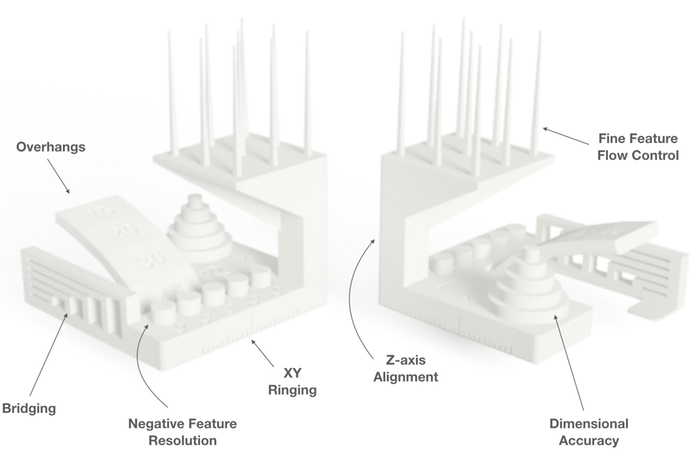
The Kickstarter x Autodesk print exposes an FDM printer’s precision via six distinct tests in one object.
By pushing a printer’s hardware and software the system to the point of failure, the print reliably visible imperfections that can be used to assess the performance of the slicer, the extruder, and the motion system together.
Here’s what’s getting measured.
- Dimensional Accuracy
- Fine Flow Control
- Fine Negative Features
- Overhangs
- Bridging
- XY Resonance
- Z-axis alignment
The tolerances and measurements are very detailed. You can find the exact measuring procedure on Github. The highest possible score is 30, indicating a very well-calibrated system.
It’s worth noting that these benchmarking tests are not a definitive measure of a printer’s worth. More an indication of a printer’s state out of the box with no-tinkering, it’s only after a full evaluation and in-depth review that we fully judge a 3D printer.
License: The text of "BCN3D Sigmax R19 Review: 10-Hour Testing" by All3DP Pro is licensed under a Creative Commons Attribution 4.0 International License.
CERTAIN CONTENT THAT APPEARS ON THIS SITE COMES FROM AMAZON. THIS CONTENT IS PROVIDED ‘AS IS’ AND IS SUBJECT TO CHANGE OR REMOVAL AT ANY TIME.